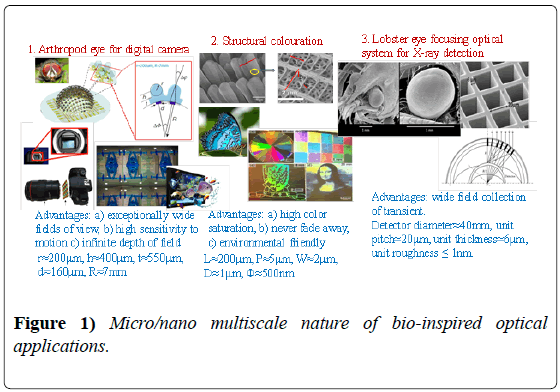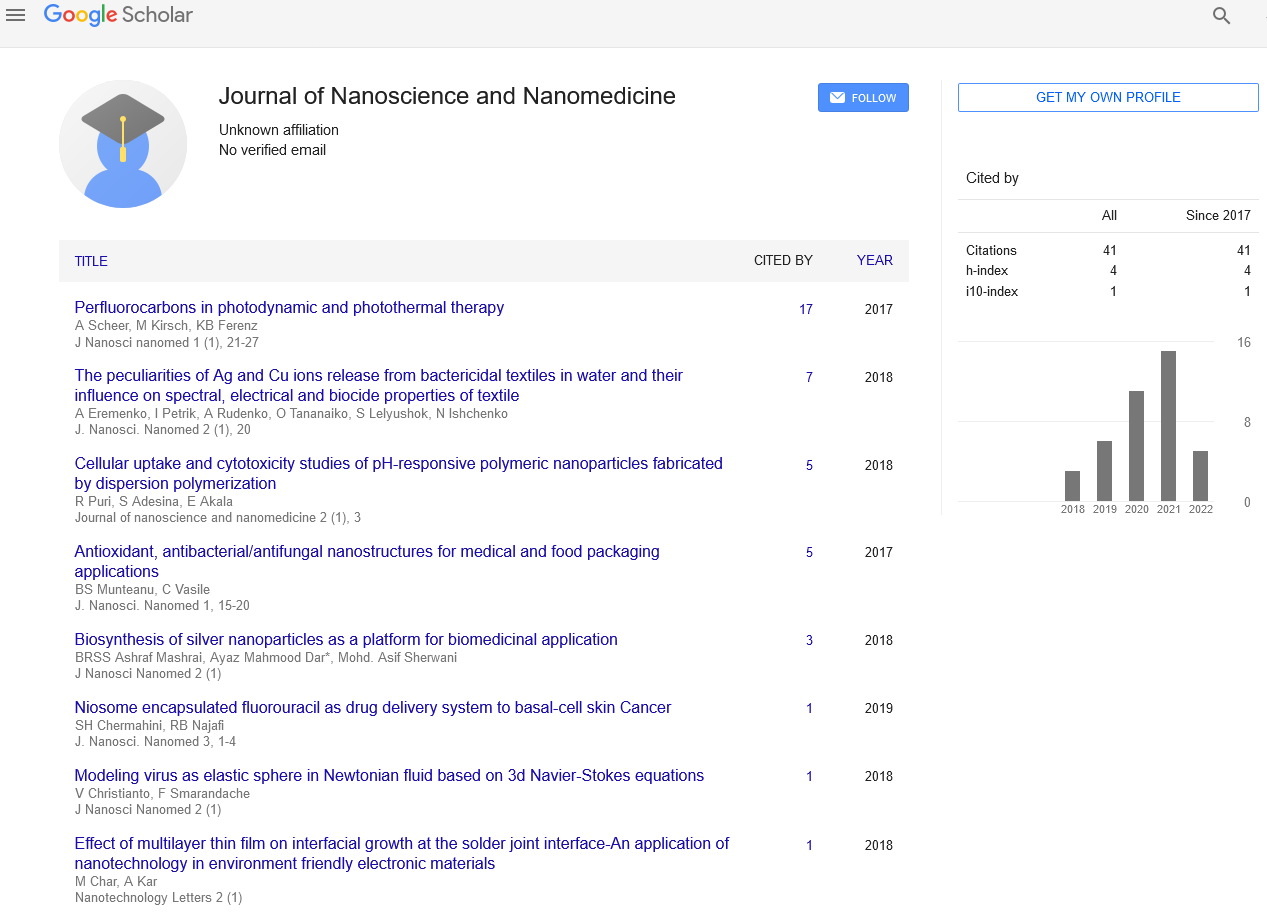Micro/nano multiscale structured surfaces for bio-inspired optical applications
Received: 05-Oct-2018 Accepted Date: Oct 10, 2018; Published: 17-Oct-2018
Citation: Cheung BCF, Bo W. Micro/nano multiscale structured surfaces for bioinspired optical applications. Nano Lett. 2018;2(1):13.
This open-access article is distributed under the terms of the Creative Commons Attribution Non-Commercial License (CC BY-NC) (http://creativecommons.org/licenses/by-nc/4.0/), which permits reuse, distribution and reproduction of the article, provided that the original work is properly cited and the reuse is restricted to noncommercial purposes. For commercial reuse, contact reprints@pulsus.com
Natural biological systems have evolved over millions of years and have sustained for the survival of the fittest. They provide a lot of inspiring ideas for engineers and scientists to develop functional optical surfaces which are named bio-inspired optical surfaces. For examples, the compound eyes of arthropods are particularly notable for their exceptionally wide fields of view, high sensitivity to motion and infinite depth of field. It is also possible to alter the apparent color of an object only utilizing its surface micro/nano-structures which is referred to be structural coloration which is inspired by the study of surface topography of butterfly wings. The colors can be tuned based on the optical interaction between the micro/nano multiscale structures and visible light, which introduces an environment friendly and versatile coloration method. It is also interesting to note that lobster eyes are made up of long, narrow cells that each reflects a tiny amount of light from a given direction. This allows the light from a wide viewing area to be focused into a single image. To achieve the functional characteristics of these bioinspired surfaces, nature has evolved with multiscale structured surfaces possessing different nanoto- micro scales of the surface features (Figure 1). Multiscale structured surfaces (MSS), such as microlens arrays, micro-pyramids and sinusoidal micro-structures are playing an important role in advanced optics and bioinspired applications. In MSS, small-scale structured patterns are embedded in large-scale flat or curved substrates using multiscale surface design processes, where the different scales of geometry have different functions [1,2].
Due to the complexity of these surfaces, these MSS commonly possess specific properties at different scales for the realization of specific functionalities which have to be fabricated by more than one type of ultraprecision machining technology with high precision in terms of submicrometre level of form accuracy and nanometric surface finishing so as to ensure the functionality of the components. Moreover, many measuring principles and instruments have also been proposed and developed to cover a wide measurement range with respect to specific and varying metrological needs [3]. For instance, the interference and diffraction of visible light can introduce an iridescent effect for structural coloration. Light with different wavelengths will be diffracted or reflected into different directions, which enables an iridescent color effect. The rendering performance of structural colors is largely determined by the ultra-precision machining capabilities of the plasmonic structures for structural coloration [4]. This requires accurate control of the machining process through modelling and simulation of ultra-precision machining technology, error compensation, measurement and characterization, etc. However, there is still a lack of methodology to govern the measurement and characterization of the relationships between different scales of geometry and their corresponding functional characteristics so as to realize the automatic and intelligent measurement and characterization of multiscale surfaces with functionality. It is also vital for the development a systematic way to explore the research and development of new types of MSS for new bio-inspired optical applications.
As a result, it is proposed to develop an integrated model-based research approach for supporting the design, ultra-precision machining, and characterization of micro/nano multiscale structured surfaces (MSSs) for their bio-inspired optical applications. Research will be undertaken to gain better scientific understanding of the inter-relationship between manufacturing tolerance and optical performance of the MSSs which have not been addressed by most of the previous research in the subject areas. Hence, an innovative approach of machining process chain modelling and optimization of surface generation in ultra-precision machining of MSSs will be developed which allows the prediction and optimization of surface generation from different machining strategies and machining tolerance assignment which allows the prediction and optimization of the machining process before actual precision manufacture of the optical components so that this can avoid expensive and time-consuming trial experiments. An information-rich measurement (IRM) approach will also be developed which will make use of a hierarchical information-based method for the characterization of MSSs [5]. Hence, an integrated model-based research system will be established to support the design, precision manufacture and characterization of surface quality of micro/nano multiscale structured surfaces (MSS) for new bio-inspired optical application. The research will contribute to reveal the science and technology in the development of new micro/nano MSS for novel bio-inspired applications in wide range of products from various industries to optics industry based on the discovery of natural biological systems, optimization of ultra-precision machining technology, and characterization of functional performance of novel Micro/nano MSSs.
REFERENCES
- Fang FZ, Zhang XD, Weckenmann A, et al. Manufacturing and measurement of freeform optics. CIRP. 2013;2:823-46.
- Li L, Yi AY. Microfabrication on a curved surface using 3D microlens array projection. J Micromech and Microeng. 2009;10:105010.
- Jiang X. Robust solution for the evaluation of stratified functional surfaces.CIRP. 2010;1:573-76.
- Yang Y, Pan Y, Guo P. Structural coloration of metallic surfaces with micro/nano-structures induced by elliptical vibration texturing. Appl Surface Sci. 2017;402:400-09.
- Cheung CF, Liu MY, Leach R, et al. Hierarchical-information-based characterization of multiscale structured surfaces. CIRP. 2018;67:539-42.






